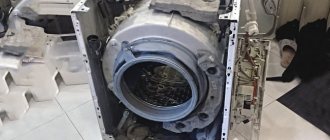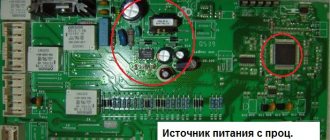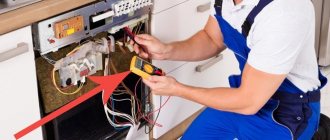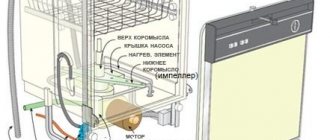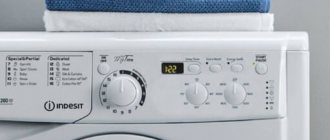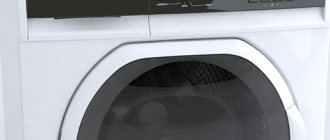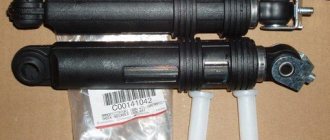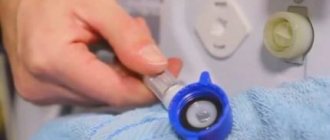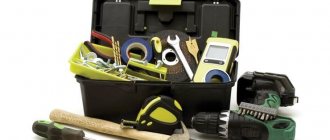A dishwasher breakdown causes a flurry of emotions, but don’t rush to despair. Our publication will help you troubleshoot Ariston dishwashers yourself. An error code on the display can indicate them, and each problem has its own “symptoms”.
We will teach you how to identify and eliminate breakdowns of the Hotpoint-Ariston dishwasher.
Ariston PMM error codes are collected and described in detail in a separate article.
The main causes of breakdowns of the Hotpoint Ariston dishwasher
It is always better to find out the cause of equipment failure yourself. This will be useful for home repairs and when calling for service. This way you will know that the masters are not imposing unnecessary expenses on you.
The location of the breakdown can be determined by external signs and malfunctions of the machine. Also, the equipment itself can report a malfunction by highlighting a code on the display. If your control panel has a screen, then the code will appear as a combination of letters and numbers. A panel without a display will indicate a problem by flashing indicators.
Here are the main error codes:
- AL01 (indicator 1 or 3 lights up) - the “Aquastop” leakage protection is turned on;
- AL02 (2-4) - water does not enter the hopper;
- AL03 (1-2/3-4) - waste liquid does not leave the tank;
- AL05 (1-3/3-5) - problems with the operation of the circulation pump or pressure switch;
- AL10 (2-4/4-6) - heating element circuit malfunction.
The meaning of the code on your display can be found in your instruction manual. If you want to know what to do, take a look at our Ariston Dishwasher Error Codes page.
PMM "Hotpoint Ariston" is similar in structure to Electrolux machines. Their malfunctions can be repeated, but still the following breakdowns are more common in Ariston models:
- The heating element does not work . This reduces the quality of washing; the cycle is carried out in cold water. If the heater penetrates the housing, the plugs may be knocked out when the PMM is turned on.
- The machine does not take in water . You may hear a hum, but no fluid is entering the tank. The cause could be blockages in the intake tract or a malfunction of the intake valve.
- The water intake does not turn off, while the drain is constantly running . Damage to the fill valve or level sensor.
- During operation, noise and hum are heard . The issue may be a blockage, a problem with the engine or its bearing.
- Leak in the car. The worst case scenario is case corrosion. At best, wear of gaskets and seals.
- Water does not drain . The drain, filter, hose or sewer is clogged. Drainage pump failure.
These are the problems users encounter. Let's figure out how to eliminate them.
PMM does not pump water
If the machine starts but still does not fill with liquid, you need to check the elements of the filling system for blockages. Before doing this, make sure that the water in your house is not turned off and that the shut-off valve is not closed.
If everything is in order, you will have to look for a blockage. For this:
- de-energize the PMM;
- turn off the tap responsible for the water supply;
- Separate the inlet hose from the dishwasher body and feel it for blockages;
- Remove the filter mesh and clean it of debris.
The problem may be a malfunctioning intake valve. The part cannot be repaired; the element will have to be replaced. It is located in the area where the inlet hose is connected.
If the dishwasher, on the contrary, constantly draws in water and immediately drains it, the problem may be in the pressure switch. An incorrectly functioning level sensor causes overflow. The pump is forced to pump out liquid and the cycle cannot begin. The problem can be solved by cleaning the pressure switch tube or completely replacing the element.
What can happen to an Ariston dishwasher
Before you try to figure out the problem yourself or grab the phone to call a service technician, it would be better to decide what exactly doesn’t work in the dishwasher?
It's no secret that service centers have big appetites. Anyone who has already encountered an unobtrusive service knows that they will often tell you how much needs to be “repaired” and how much all this “pleasure” will cost you.
To avoid being deceived, determine the type of breakdown yourself. There will be no difficulties with this. And the Ariston dishwasher itself will help with this. Its manufacturer took care of this in advance.
Prevention
Most dishwasher malfunctions can be fixed on your own, as already described above. But in order for the dishwasher to last a long time, not break down and not require repairs, it is recommended to regularly carry out preventive maintenance:
- Be sure to clean any remaining food from the dishes before loading;
- wash only those dishes that are dishwasher safe;
- The dishes should not come into contact with the sprayer;
- Use only high-quality detergent intended for dishwasher;
- Clean the strainer every week;
- Check to see if the injectors and filters are dirty and clean them regularly.
Fault signals for popular models
If water does not flow into the machine at all, the essence of the problem is clear. But sometimes the appliance simply does not receive enough water to fully wash or rinse: we see that the drum is not empty and cannot determine the cause of the problem.
In this case, the signals from the machine itself will help, which are displayed on the display immediately or after starting the diagnostics.
In many washing machines, if the supply is insufficient or the water intake system is broken, the chemical formula of water is displayed on the display - H2O
Problem codes with water intake for some popular models:
- Asko – Water inlet fault or E01;
- Zanussi and Electrolux – E10 or E11;
- Candy – E02;
- Ariston, Hotpoint Ariston and Indesit – H2O;
- Samsung – E1;
- LG – PE or IE;
- Whirlpool – F01 or FH;
- Bosh - F01 or Aquastop.
If the washing machine is not equipped with a display, the causes of the malfunction will be indicated by flashing lights on the panel. This code is programmed at the factory, so its meaning depends on the specific model, and a decoding table is included in the product instructions.
The water stays cold
Before you begin troubleshooting, check to see if your machine is under warranty. If yes, then you should not disassemble the case yourself. Take advantage of the right to free maintenance and repairs.
If the warranty has expired, proceed with diagnostics. When the dishwasher displays error AL10, it means there is a problem in the heating circuit. Poorly washed dishes will also indicate problems with the heating element.
If the problem is a non-working heating element, you will have to replace the element. Purchase a heater specifically for your PMM model. After this you can start repairing:
- turn off the power to the machine, disconnect it from the water supply and sewerage;
- remove the side wall of the dishwasher and the protection;
- find the heating element;
- inspect the wiring leading to the heater for burns and other defects;
- Place the dishwasher on the floor, on the back panel, remove its bottom;
- disconnect the wires connected to the heating element;
- remove the heater from the housing;
- install a new heating element, fix it in place;
- Connect the previously disconnected wires to the part.
After this, you need to run a test wash. If the water begins to heat up, then the problem is solved. Replacing a heating element is not considered hard work, so you can do it yourself.
Dishwasher self-diagnosis
Various machines of this brand have the ability to diagnose various types of faults and inform the user about them using the control panel. Information can be displayed in various ways:
- on the display screen in the form of a special code;
- on the LED indicator of machines with 4 programs;
- on the LED indicator of machines with 6 programs.
In the case of cars without a display, information is provided by a certain number of indicator flashes. For machines with 4 and 6 programs, the fault symbols are different. Therefore, we will consider them as different. The only clarification is that the indication may indicate several possible malfunctions.
Potential culprits
If the Ariston washing machine does not heat up to the specified 30-90 degrees, then it is not a fact that the problem is in the heating element. In addition to it, several other devices and sensors are involved in heating, the failure of which affects the low water temperature. Moreover, often there is no malfunction - it is likely that the user chose the wrong washing program.
Having detected a lack of heating, you do not need to immediately start disassembling the washing machine. First of all, you should pay attention to the dashboard of the machine and look at the selected mode. Many programs, for example, “Delicate”, “Sportswear”, “Silk”, “Fast”, “Economical”, “Silk”, according to factory settings, should not bring the water to high temperatures. For most Ariston models, even standard washing occurs at 30-40 degrees.
Many washing programs on an Ariston machine do not involve heating the water above 30 degrees.
If a “hot” program is enabled, then you need to additionally check the set heating temperature. Modern Ariston washing machines offer the user to change factory settings to save energy consumption or speed up the cycle. Probably, a key was accidentally pressed, reducing the degrees to minimum values. Or, conversely, the system did not count the changed parameters due to the selector not working. It is better to scroll the regulator forward a few positions and reboot the equipment. It is possible that a so-called “technical glitch” occurred.
There's a puddle under the car
If the machine displays code AL01, it means there is a leak. If you find a puddle under the housing, check to see if the rubber seals on the pump are leaking. If so, the gaskets will need to be replaced.
Sometimes water flows from under the PMM door. In this case, the issue may be a worn out sealing collar. Also often the reason is improper loading of dishes - large plates do not allow the door to close completely.
If the door does not close at all, you will have to check the lock. Usually the blocker needs to be replaced. You should purchase a locking device specifically for your PMM model.
Leaks occur at the points where the inlet or drain hose is connected. Check the joints and tighten the clamps if necessary. Sometimes it may be necessary to replace or add several fasteners.
Preparation for subsequent disassembly
The principle of assembly and disassembly for built-in and free-standing dishwashers is the same. The only difference is that the built-in ones do not have a removable top cover and metal walls. By the way, free-standing models of dishwashers can be considered partially built-in. With the top cover removed, they fit perfectly under the tabletop, but at the same time they retain their own (and not furniture) façade.
Before starting to disassemble the dishwasher, be sure to disconnect it from the power supply. Then we turn off the water supply. Now you can work without expecting surprises.
A small addition - machines from different manufacturers may have different configurations of fasteners. For example, at Bosch and Siemens all fastening screws are made in the form of an asterisk of a certain size.
It is necessary to prepare the appropriate tool in advance. Screwdrivers, pliers and a set of keys will also come in handy.
We remove everything that may interfere with disassembly. Disconnect the water fill and drain hoses. Open the door and take out the removable baskets for dishes and attachments. It’s clear that there shouldn’t be any dishes there. If you find any remaining water, remove it with a rag or sponge. During disassembly, water will still come out. Therefore, there is no need to remove funds to collect it far.
Now you need to move the machine to a place where there is enough space to disassemble and place the parts to be removed. Try to prepare boxes or bags for storing small parts and screws.
Otherwise, subsequent assembly may be delayed. It is advisable to have a camera or phone with a camera nearby. During the process of disassembling and disconnecting tubes or wires, it is better to capture how everything happened. Then the reverse assembly process will not be surprising.
“Weak points” and failure codes of famous brands
Today, many dishwashers from well-known world manufacturers, even in the budget category, are equipped with an automatic system for diagnosing violations and breakdowns. It uses codes - when a malfunction is detected, the machine displays the corresponding code on the screen. Moreover, each manufacturer uses its own designation system.
Electrolux
- i10 – water is not pumped into the chamber;
- i20 – water drainage is difficult or does not occur;
- i30 – overflow or leakage;
- i50 - short circuit of the pump triac;
- i60 – heating system violations;
- i70 – short circuit or break of thermistor;
- i80 – communication error with firmware;
- i90 – the programming model is broken;
- iA0 – sprinkler blocking;
- iB0 – transparency sensor does not work;
- iC0 – connection with the user interface is lost;
- id0 – no signal is received from the tachogenerator;
- iF0 – water supply time error.
Hotpoint-Ariston
Ariston machines use the following code system:
What kind of lighting do you prefer?
Built-in Chandelier
What goes wrong most often?
In terms of design and repair features, Ariston dishwashers are similar to dishwashers from the Bosch and Electrolux brands. However, breakdowns that occur with Boschs cannot always happen with Aristons. Of course, like other appliances, dishwasher parts are subject to wear, but still, most often the following malfunctions occur in Hotpoint Ariston dishwashers:
- failure of the heating element, which can lead to poor dishwashing, as well as knocking out plugs in the electrical network;
- the water supply to the machine is very slow or absent, the reason for this is a clogged or broken fill valve;
- draining water when drawing it non-stop, this malfunction is also a consequence of a breakdown of the filling valve or water level sensor;
- the dishwasher makes unusual noises and sounds, this indicates either a clogged rocker arm inside the machine tank or a malfunction of the circulation pump;
- a water leak in the car indicates a broken drain pump, a broken hose or a loose door;
- lack of drainage also indicates a breakdown of the drain pump and clogged filters.
Important! If you independently attempt to solve any problem with a dishwasher that is under warranty, the warranty service will become void.
How to check if a washing machine is heating water
A situation may occur when the washing unit has fully completed all stages of washing, but the laundry was poorly washed, although the same detergent was used. One of the reasons may be non-compliance with the temperature regime. In other words, the machine washed clothes in cold water. In this case, it is worth checking whether the water entering the washing drum is heating up.
To do this, you need to select one of the washing modes, which involves heating the water to a temperature of 50-60*C and 20 - 30 minutes after it starts, touch the glass of the loading hatch. For top-loading machines, place your palm on the top cover. If these elements are warm, the water heats up; if they are cold, the washing unit is faulty. After finishing washing, you should identify the causes of the malfunction and eliminate the malfunction. Further use of the washing machine will not only not lead to the desired washing result, but may also render it completely unusable.
PMM buzzes a lot and doesn’t wash
Loud noise during PMM operation may be a result of a pump or motor failure. Another possible reason is bearing wear. For diagnostics and repairs, you will have to disassemble the machine body.
To diagnose the electric motor and drain pump, you will need a special device - a multimeter.
Next you need to get to the elements. Before disassembling the PMM, be sure to de-energize it and disconnect it from communications. Then remove the side wall and bottom.
Set the multimeter to resistance measurement mode. After this, lean the tester probes first against the engine contacts, then against the pump. Values within 1500 Ohms are considered normal. If any deviations are found, replace the parts. Removing faulty elements is quite simple. Disconnect all wires and pipes leading to them. After this, remove the components from the housing and install new parts, fixing them in place.
Causes of malfunctions and do-it-yourself repairs
If at one point you notice that the PMM has stopped turning on, the quality of dishwashing has deteriorated, or signs of leakage have appeared, there is no need to despair and immediately run to the service center. Most problems can be easily fixed on your own without contacting specialists. The main thing is to determine the reason for their appearance and draw up a clear plan of action for repairing Hotpoint Ariston dishwashers.
Doesn't heat water
If, after the end of the wash cycle, kitchen utensils remain cold and there are food residues on their surfaces, the dishwasher may have stopped heating the water or is not warming it up enough. There is no reason to worry, because... This problem can be explained by household factors. It’s easy to remove them with your own hands.
If you bought a new Hotpoint Ariston LSF dishwasher and noticed that it does not heat the water, you need to immediately go to the store and report a manufacturing defect. However, sometimes the problem is related to the incorrect connection of the machine, which is why it continuously draws and drains water without having time to warm it up to the required temperature. To fix the problem, it is better to contact a specialist who will repair the car at home in a short time.
Another reason for the lack of heating may be the selection of an inappropriate washing mode.
In order to save energy, some users set the delicate washing mode, which involves heating the liquid to 30-40°C.
Conclusions on the topic
If you are well versed in repairing household appliances and are planning to troubleshoot your dishwasher yourself, then you should try it. True, there is a sure way to avoid such troubles - compliance with operating rules.
The Ariston Hotpoint dishwasher is a faithful assistant that, with proper care and proper operation, will serve without problems or breakdowns for many years. However, if you still encounter a problem with the electronics or control module, it is better to immediately contact a qualified technician without wasting time on independent experiments with equipment repair.
Would you like to tell us how your dishwasher code system helped you identify the cause of a malfunction in a timely manner? Do you have information that is worth sharing with site visitors? Please write comments in the block below, post photos related to the topic of the article, and ask questions.

